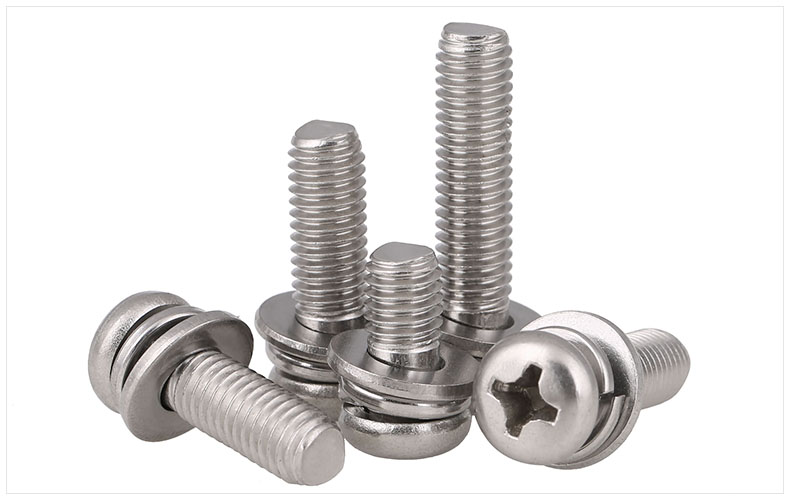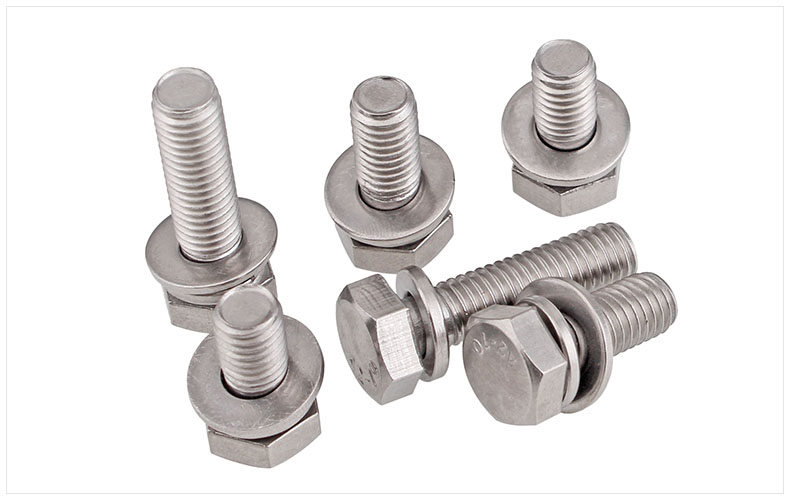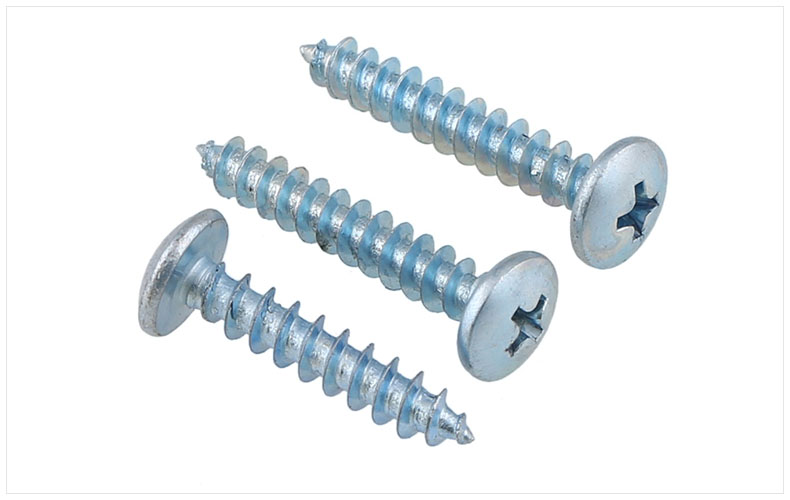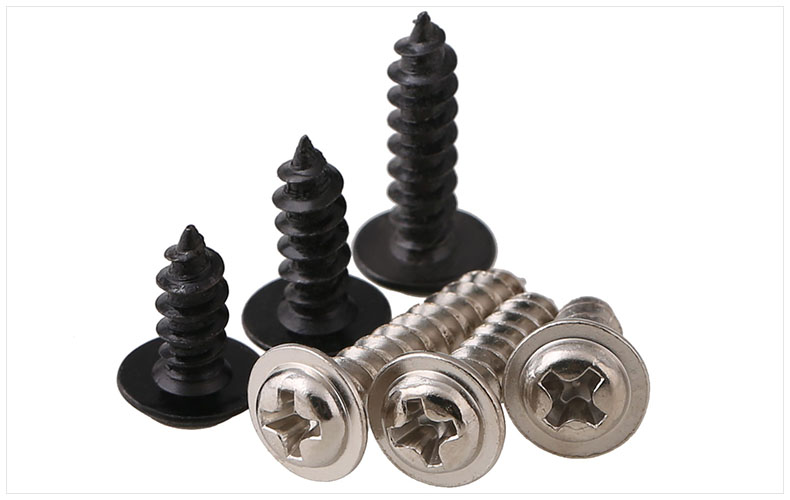What are the production processes for screws?
2023-04-11(230)Views
98彩票Screw Production Process (1) - Annealing
98彩票1、 Purpose: Heat the wire to an appropriate temperature, maintain it for a certain period of time, and then slowly cool it to adjust the crystalline structure, reduce hardness, and improve the room temperature processability of the wire.
98彩票2、 Operation process:
98彩票(1) Feeding: Hang the products that need to be processed into the furnace, and pay attention to the furnace cover being tightly covered. Generally, one furnace can simultaneously process 7 rolls (approximately 1.2 tons per roll).
98彩票(2) Heating up: Slowly raise the temperature inside the furnace (about 3-4 hours) to the specified temperature.
(3) Insulation: Material 1018 and 1022 wires are maintained for 4-6 hours at 680 ℃ -715 ℃, material 10B211039, and CH38F wires are maintained for 5.5-7.5 hours at 740 ℃ -760 ℃.
(4) Cooling: Slowly reduce the temperature inside the furnace (about 3-4 hours) to below 550 ℃, and then cool down to room temperature with the furnace.
3、 Quality control:
98彩票1. Hardness: The material is 1018 and 1022 wire with a hardness of HV120-170 after annealing, and the material is medium carbon wire with a hardness of HV120-180 after annealing.
2. Appearance: There should be no oxide film or decarburization on the surface.
Screw Production Process (II) - Acid Cleaning
1、 Purpose: To remove the oxide film on the surface of the wire and form a layer of phosphate film on the metal surface to reduce scratches on the tool and mold during wire drawing, cold stamping, or forming processes.
2、 Operation process:
98彩票(1) Pickling: Immerse the entire disk element in three hydrochloric acid baths at room temperature with a concentration of 20% to 25% for several minutes, with the aim of removing the oxide film on the surface of the wire.
98彩票(2) Clear water: Remove hydrochloric acid corrosion products from the surface of the wire.
98彩票(3) Oxalic acid: increases the activity of metals to make the skin film generated in the next process more dense.
98彩票(4) Film treatment: immerse the disc element in phosphate, and the surface of the steel comes into contact with the formation treatment solution. The steel dissolves to form insoluble compounds (such as Zn2Fe (Po4) 2? 4H2o), attached to the surface of steel to form a film.
98彩票(5) Clear water: Remove any residue on the surface of the skin film.
98彩票(6) Lubricant: Due to the low friction coefficient of phosphate film, it cannot provide sufficient lubrication during processing. However, it reacts with metal soap (such as sodium soap) to form a hard metal soap layer, which can increase its lubrication performance.
98彩票Screw Production Process (III) - Wire Drawing
1、 Purpose: Cold pull the disc element to the required wire diameter. In practical terms, for some products, it can be divided into two stages: rough extraction (shell stripping) and fine extraction.
98彩票2、 Operation process
98彩票After pickling, the disc element is cold drawn to the required wire diameter through a wire drawing machine. Suitable for wires used for large screws, nuts, and teeth.
Screw Production Process (4) - Forming
1、 Purpose: To achieve the shape and length (or thickness) of semi-finished products by cold forging (or hot forging) of wire.
98彩票2、 Operation process:
1. Hexagon bolt (four die four punch or the third mock examination three punch)
(1) Cutting: By moving the movable scissors in one direction, the wire stuck in the cutting mold is cut into the desired blank.
(2) First punching: The back punching die presses the blank against the blank, forming the initial shape, and then the back punching die pushes the blank out.
98彩票(3) Second punching: The raw material enters the second punching mold, and the second punching mold compresses. The raw material is in a flat circular shape, and then the later punching mold pushes the raw material out.
98彩票(4) Third punching: The raw material enters the third punching mold and is cut through the hexagonal punch core. The hexagonal head of the raw material is initially formed, and then the later punching mold pushes the raw material into the third punching mold. The cut material is cut from the hexagonal head and the hexagonal head is formed.
2. Hexagon bolt (the third mock examination and three punches)
3. Screw (general head type the first mock examination and two punches)
(1) Cutting: By moving the movable scissors in one direction, the wire stuck in the cutting mold is cut into the desired blank.
98彩票(2) One punch: fixed by stamping, the first punch will preliminarily shape the product head, so that it can be fully formed in the next stroke. When the product is a straight cut groove, one punch is an inner concave or elliptical groove, and when the product is a cross groove, one punch is an inner concave square groove.
(3) Second punching: After the first punching, the punching tool runs as a whole, and the second punching die moves directly in front of the mold, while the second punching die moves forward to shape the product. Afterwards, the embryonic material is pushed out by a recoil rod.
98彩票3、 Hot beating
98彩票1. Heating: Use the heating equipment to heat one end of the preform to a white hot state, and set the heating temperature and time according to the product specifications. Generally, heating for less than 3/4 for 7-10 seconds, and heating for 7/8-1 "for about 15 seconds.
98彩票2. Forming: Quickly move the heated embryo material to the forming machine, fix it through the back seat, clamp the mold, and impact the embryo material with the head mold to form it. The distance of the backseat can be adjusted according to the length of the raw material.
3. Tie rod: Use extrusion on the tie rod machine to shrink the product.
98彩票Hot beating is also known as red beating.
Latest article promotion
-

Types and Applicable Occasions of Non Standard Screws from Screw Manufacturers
Types and Applicable Occasions of Non Standard Screws from Screw ManufacturersTypes and applications of non-sta......
-

Screw manufacturer Titanium alloy screw manufacturer: What is titanium and what are its applications?
Screw manufacturer Titanium alloy screw manufacturer: What is titanium and what are its applications?Titanium used i......
-

How to deal with the problem of rust on screws assembled by screw manufacturers?
How to deal with the problem of rust on screws assembled by screw manufacturers?When brown rust spots appear on the su......
-

The screw manufacturer introduces how to handle loose screws in the zoom lens
98彩票The screw manufacturer introduces how to handle loose screws in the zoom lensAnalysis and handling: Loose screws are ......
Recommended high-quality articles
-

Types and Applicable Occasions of Non Standard Screws from Screw Manufacturers
98彩票Types and Applicable Occasions of Non Standard Screws from Screw ManufacturersTypes and applications of non-sta......
-

Screw manufacturer Titanium alloy screw manufacturer: What is titanium and what are its applications?
Screw manufacturer Titanium alloy screw manufacturer: What is titanium and what are its applications?Titanium used i......
-

How to deal with the problem of rust on screws assembled by screw manufacturers?
How to deal with the problem of rust on screws assembled by screw manufacturers?When brown rust spots appear on the su......
-

The screw manufacturer introduces how to handle loose screws in the zoom lens
98彩票The screw manufacturer introduces how to handle loose screws in the zoom lensAnalysis and handling: Loose screws are ......

